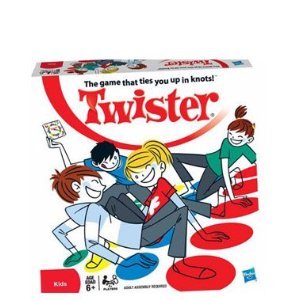World Occupational Therapy Day is coming up on October 27th and the theme of this year's event is Exploring Balance. As I sit down to write this post for
Linda's World OT Day blog carnival, I feel like finding balance in my life is something I need to work on, especially right now.
Recently, my life has been in a state of transition and things are now starting to settle down. In August I made a cross country move and a few weeks ago started a new job, which means new routines in a new school, in a new city. And anyone who blogs knows that it takes way more time than you ever thought it would (or is that just me?).
So how to balance blogging with being an effective occupational therapist, a loving wife, a good friend, eating well, exercising, AND making time for myself? Here are a few of the things that I do (or am working on doing) to create more balance in my life. I would love to hear how others find balance.
Get organized.
Without a good organizational system, I would be lost and completely out of balance. I use a mix of high tech and low tech organization devices. For me, I use lists on my phone because I always have my phone with me. I keep a running grocery list, list of meals for the week, to-do list (daily, weekly, someday), restaurants I want to try, places I want to check out, TED Talks I want to watch. You name it, I've got a list for it. For work, I use an old-fashioned paper planner. My husband and I use Google Calendar to keep track of each other. He can see when I have yoga class and book club meetings. I can see when he has an evening or early morning meeting.
Disconnect.
This is one that I really need to work on. My goal is to set a time (maybe 8pm?) where technology is turned off. No more blogging, Facebook, email, Twitter, Instagram...I'm sure I will survive. In fact, I'll probably sleep better by winding down earlier. Along the lines of disconnecting, I also need to choose an amount of time I'm willing to spend on my blog each day and stick to it. I'm sure whatever great idea I have can wait for another day.
In order to help others, help yourself first.
I truly believe
that these are words to live by. I'm a much happier person and more
compassionate in all of my roles when I take care of myself. By taking care of myself, I am in a better state of mind to help
others. For me this includes drawing a firm line between work and life
(which can be challenging with a work-related blog - see above) and taking time to
do things that I love, like running, reading a good book and going to
yoga class.
Do what you love. Love what you do.
I think Steve Jobs said it best in his
2005 commencement speech at Stanford University:
"...for
the past 33 years, I have looked in the mirror every morning and asked
myself: 'If today were the last day of my life, would I want to do what I
am about to do today?' And whenever the answer has been "No" for too
many days in a row, I know I need to change something."
We
all have days when we don't want to do what we are doing. That's life.
But if you ask yourself this question and you keep hearing "No" as the
answer, then it is time to change something. Your routine, your job,
your attitude, your expectations of what can be accomplished in one day.
Whatever needs to change, just take the plunge and do it.
Continually evaluate what is important.
This goes along the lines of the Steve Jobs quote above. It is important to me that I be a caring and compassionate occupational therapist. It is also important to me that I make time for friends and family. It is important to me that I be fully present during the time I spend with my husband. It is important that I have "me-time" to recharge. While I do love blogging, and I do believe that my blog provides valuable information, it is not the most important thing in the world. Nor is it my entire identity. It's just a very small part of who I am. The blog can wait. It will still be there tomorrow, and the next day. The great idea I want to share can wait. All of the other blogs that I want to read and comment on can also wait, for they are not going anywhere either. Sometimes I just need to remind myself of that in order to maintain balance in my life.
So, there it is. A few things that I try to do to maintain balance in my life. It's always a work in progress and some days or weeks are more imbalanced than others. What? You said progress reports are due next week? I have how many re-evals due? That IEP is rescheduled for tomorrow? Aghhhh!!!! You get what I'm saying :) With that, I'll leave you with this quote from Alexandra Stoddard:
"Slow down, calm down, don't worry, don't hurry, trust the process."
OT bloggers, how do you balance blogging, work, leisure, family and everything else in life?Please share your secrets!















